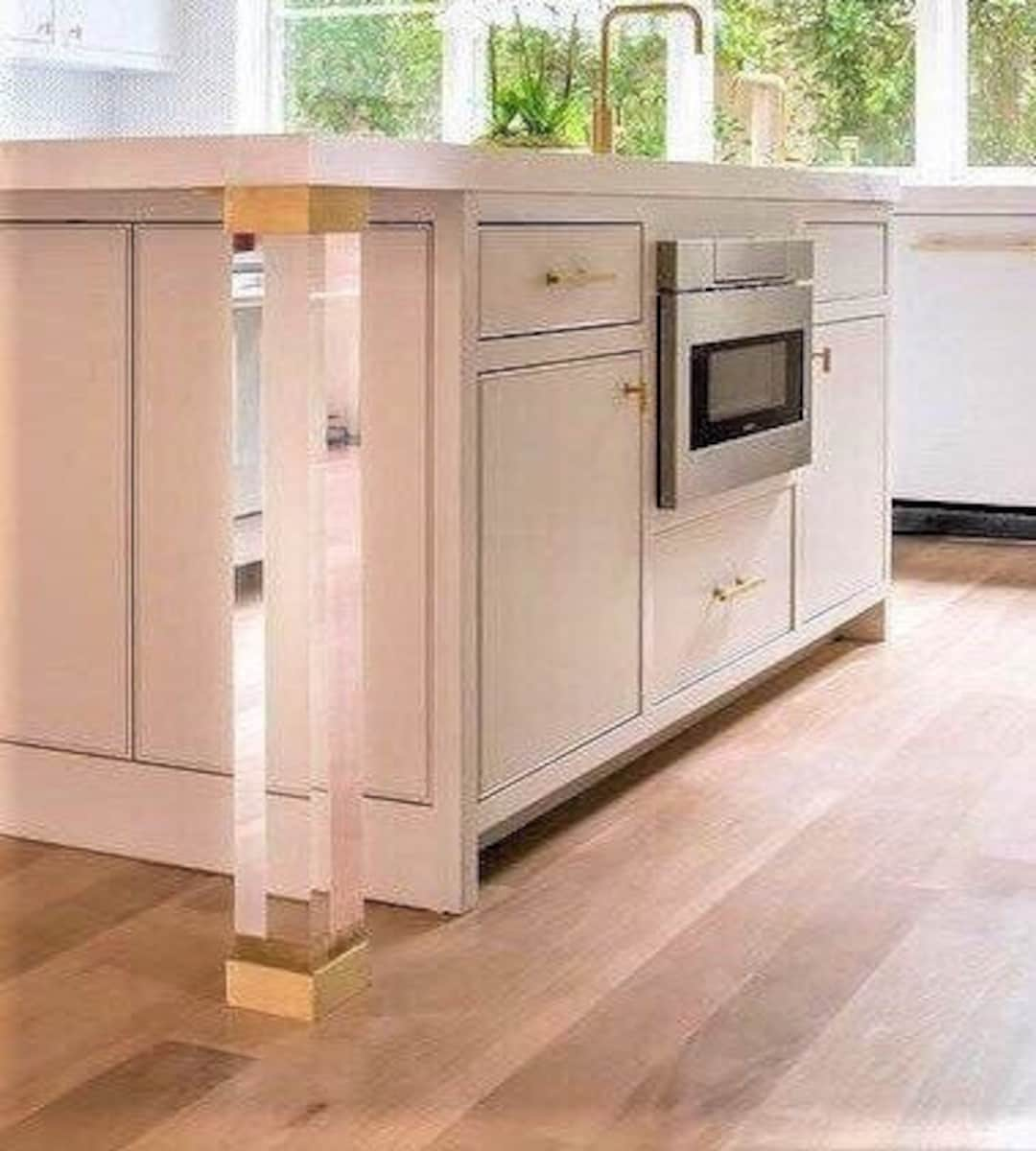Transform Any Kind Of Kitchen Area with Attractive Legs For Kitchen Island Options
Transform Any Kind Of Kitchen Area with Attractive Legs For Kitchen Island Options
Blog Article
Essential Elements to Take Into Consideration When Picking Legs For Kitchen Area Island
Selecting the proper legs for a kitchen island involves a careful assessment of several factors that can significantly influence both capability and aesthetic charm. As we discover these elements, it ends up being clear that each choice can have significant ramifications for the total kitchen experience.
Material Options
When picking legs for a kitchen island, comprehending the numerous product options is vital for attaining both aesthetic appeal and structural honesty (Legs For Kitchen Island). The selection of material significantly affects not just the durability of the island but also its total style and capability
Metal legs, typically made from stainless steel or wrought iron, contribute a industrial and modern feeling while making certain longevity and security. These products are resistant to use and can support significant weight, making them ideal for bigger islands.
An additional choice is engineered materials, like MDF or plywood, which can be extra cost-efficient while still using a variety of surfaces. However, they might not supply the exact same level of security as solid wood or steel. Last but not least, products such as acrylic or glass can develop a contemporary look, though they might require added assistance to guarantee security.
Ultimately, the option of material for kitchen island legs must align with the wanted performance and the total style of the cooking area.
Style and Design

When considering style, the shape and coating of the legs are vital. Conical legs can supply a feeling of lightness and sophistication, while thicker, extra robust legs can communicate stamina and stability. Additionally, the finish-- be it painted, tarnished, or all-natural-- must match the cabinets and counter top materials to develop a unified appearance.
Additionally, the style of the legs can likewise reflect individual preference. Custom-made or decorative legs, such as those featuring detailed makings or distinct geometric shapes, can work as centerpieces, adding character and individuality to the kitchen area. Ultimately, the right selection will not only boost performance but additionally raise the aesthetic allure, making the kitchen area island a standout feature of the home.
Elevation Considerations
Picking the proper height for cooking area island legs is important, as it directly influences both functionality and convenience. The conventional height for a kitchen area island generally varies from 36 to 42 inches, lining up with usual counter top elevations. A 36-inch height is ideal for cooking and cooking, permitting comfy use cooking area appliances and devices. Conversely, an elevation of 42 inches is often liked for islands intended for bar seating, suiting taller stools and using a casual dining experience.

It is likewise important to make up individuals' preferences and elevations. Personalizing the height can make certain a comfortable experience for all relative, making the cooking area island a much more enjoyable and practical space.
Weight Assistance
Guaranteeing ample weight support for cooking area island legs is important for both safety and security and functionality. The cooking area island frequently offers multiple functions, consisting of cooking, eating, and additional storage, demanding a robust support framework. learn this here now When selecting legs, it is vital to consider the general weight ability required based on the island's meant usage and the materials that will be put on it.
The choice of material for the legs plays a substantial role in their weight-bearing capabilities. Strong timber, steel, and heavy-duty composites normally give exceptional stamina contrasted to lighter products. In addition, the design of the legs-- whether they are directly, tapered, or have a pedestal type-- can affect their capacity to distribute weight properly throughout the structure.
Furthermore, the leg positioning should be purposefully prepared to boost stability. Legs placed at the corners or with a broader base can better sustain heavier tons. Always seek advice from the supplier's specifications relating to load restrictions to guarantee that the legs can sustain the desired weight without compromising security. In summary, picking kitchen area island legs with ample weight support is vital for producing a risk-free and useful cooking room.
Installment and Upkeep
Proper setup and upkeep of kitchen area island legs are critical for making sure longevity and stability. This usually includes safeguarding the legs to the island base using proper fasteners, guaranteeing that the legs are degree and aligned.
When mounted, regular maintenance is essential to preserve the stability and look of the legs - Legs For Kitchen Island. For wooden legs, regular cleansing with a wet cloth and application of appropriate timber gloss can avoid wetness damages and maintain their finish. Metal legs might call for a gentle cleaning remedy to remove grease and gunk, adhered to by a completely dry cloth to stop corrosion development
Additionally, examine the legs on a regular basis for indicators of wear or damages, such as splits or loosened joints. Tightening up screws or screws as required can likewise extend the lifespan of the legs. By sticking to these installation and maintenance techniques, home owners can make certain that their kitchen island continues to be strong and aesthetically appealing for several years ahead.
Verdict

Aesthetic coherence is critical in choosing the style and style of legs for a kitchen area island, as these components substantially affect the total ambiance of the space. Tapered legs can provide a sense of lightness and elegance, while thicker, more robust go to the website legs can convey strength and stability.Choosing the appropriate elevation for cooking area island legs is crucial, as it directly influences both capability and convenience. In recap, choosing kitchen area island legs with sufficient weight support is important for creating a safe and functional cooking area.
In final thought, selecting legs for a kitchen island demands mindful consideration of various factors, consisting of product choices, style, elevation, weight assistance, and installation.
Report this page